
Chatham is a town located within the Medway unitary authority in the ceremonial county of Kent, England. The town forms a conurbation with neighbouring towns Gillingham, Rochester, Strood and Rainham.

Medway is borough and unitary authority area in Kent, South East England. It had a population of 278,016 in 2019. The unitary authority was formed in 1998, when the boroughs of Rochester-upon-Medway and Gillingham were merged to form Medway Towns. The borough is governed by Medway Council, a unitary authority which is independent of Kent County Council, but remains part of the ceremonial county of Kent.
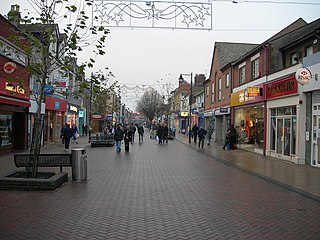
Gillingham is a town in the unitary authority area of Medway in the ceremonial county of Kent, England. The town forms a conurbation with neighbouring towns Chatham, Rochester, Strood and Rainham. It is also the largest town in the borough of Medway.

Sheerness is a port town and civil parish beside the mouth of the River Medway on the north-west corner of the Isle of Sheppey in north Kent, England. With a population of 11,938, it is the second largest town on the island after the nearby town of Minster which has a population of 21,319.
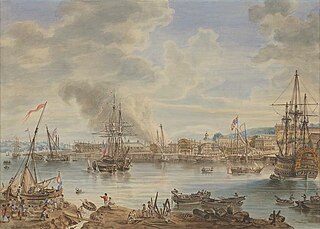
Chatham Dockyard was a Royal Navy Dockyard located on the River Medway in Kent. Established in Chatham in the mid-16th century, the dockyard subsequently expanded into neighbouring Gillingham.
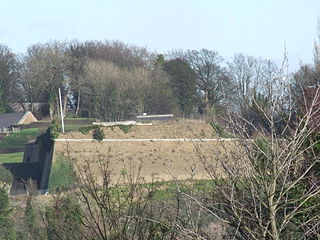
Fort Amherst, in Medway, South East England, was constructed in 1756 at the southern end of the Brompton lines of defence to protect the southeastern approaches to Chatham Dockyard and the River Medway against a French invasion. Fort Amherst is now open as a visitor attraction throughout the year with tours provided through the tunnel complex

Fort Pitt is a Napoleonic era fort on the high ground of the boundary between Chatham and Rochester, Kent.
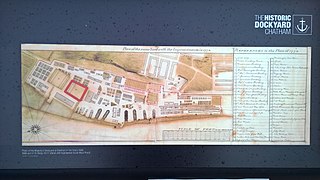
The Historic Dockyard Chatham is a maritime museum on part of the site of the former royal/naval dockyard at Chatham in Kent, South East England.
The Medway School of Pharmacy is a school of pharmacy in South East England. Established in 2004, the school is the result of a collaboration between the University of Greenwich and the University of Kent. Its campus is part of a shared facility on Chatham Dockyard in Medway, Kent.

St Mary's Island, is part of the Chatham Maritime development area in Medway, South East England. It is located at the northern end of Chatham, adjacent to Brompton and Gillingham. Once part of the Royal Dockyard, Chatham, the area had consisted of a mixture of sports fields and warehousing during the later years of the Royal Navy's time in occupation.

A Royal Naval Hospital (RNH) was a hospital operated by the British Royal Navy for the care and treatment of sick and injured naval personnel. A network of these establishments were situated across the globe to suit British interests. They were part of the Royal Naval Medical Service.
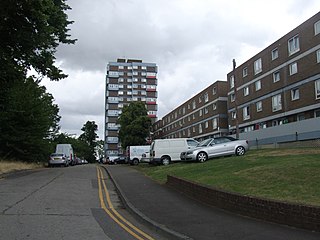
Brompton is a village near the town of Chatham in Medway, Kent, England. Its name means "a farmstead where broom grows" — broom is a small yellow flowering shrub. Today, Brompton is a suburban village and is located between Chatham Dockyard and the town of Gillingham.

The Royal Hospital Haslar in Gosport, Hampshire, which was also known as the Royal Naval Hospital Haslar, was one of Britain's leading Royal Naval Hospitals for over 250 years. Built in the 1740s, it was reputedly the largest hospital in the world when it opened, and the largest brick-built building in Europe.

Sheerness Dockyard was a Royal Navy Dockyard located on the Sheerness peninsula, at the mouth of the River Medway in Kent. It was opened in the 1660s and closed in 1960.

Brompton Academy is an 11–18 mixed, secondary school and sixth form with academy status in Gillingham, Kent, England. It is part of the University of Kent Academies Trust.

The Drill Hall Library in North Road, Chatham in Kent, England, was built as a military drill hall in 1902, for the Royal Navy as part of HMS Pembroke shore establishment and barracks. The barracks closed in 1984. The Grade II listed buildings of the barracks, which include the Captain's House, a Mess block, the Pilkington Building, the four barrack blocks, the Gymnasium, and the surrounding walls of barracks were then redeveloped as part of the Universities at Medway, a tri-partite collaboration of the University of Greenwich, the University of Kent and Canterbury Christ Church University on a single campus. The three universities share use of the Drill Hall Library.

The Great Lines Heritage Park is a complex network of open spaces in the Medway Towns, connecting Chatham, Gillingham, Brompton and the Historic Dockyard. The long military history of the towns has dominated the history of the site and the park. The Great Lines Heritage Park, consists of Fort Amherst, Chatham Lines, the Field of Fire, Inner Lines, Medway Park together with the Lower Lines.

The Portland Royal Naval Hospital was a naval hospital on the Isle of Portland, Dorset, England. Portland Harbour was a naval anchorage and fuelling facility, which grew to become a Naval Base and Royal Dockyard. A RN Hospital was initially established in the dockyard area in the 1870s, which served until it was replaced by a new purpose-built naval hospital, located close to Castletown, at the beginning of the 20th century. It closed in 1957, when it was handed over to the National Health Service, which still runs the hospital. It is now known as Portland Community Hospital.

Healthcare in Kent has, from 1 July 2022, been mainly the responsibility of the Kent & Medway Integrated Care Board. Certain specialised services are directly commissioned by NHS England, coordinated through the South East integrated regional team. Some NHS England structures are aligned on a Kent and Medway basis, others on a South East basis and there is liaison with London to provide many tertiary healthcare services.
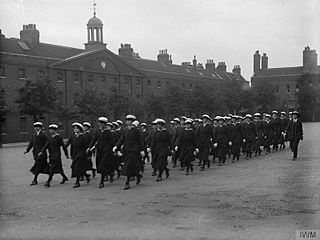
The Royal Marine Barracks, Chatham was a military installation occupied by the Royal Marines and located at the Gun Wharf at Chatham in Kent. The barracks were situated immediately to the south of the Dockyard, just above the Ordnance Wharf. The barracks were closed in 1950 and demolished in 1960.



























